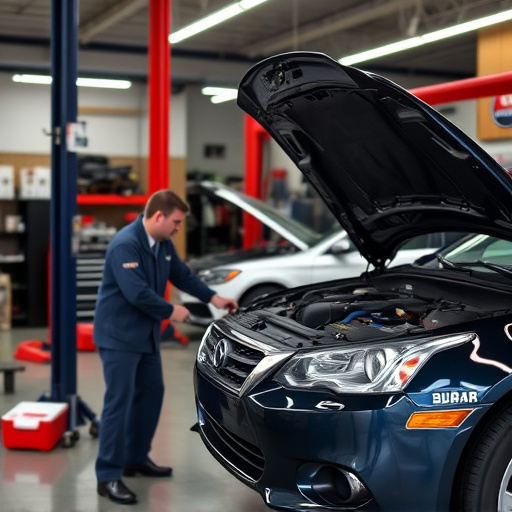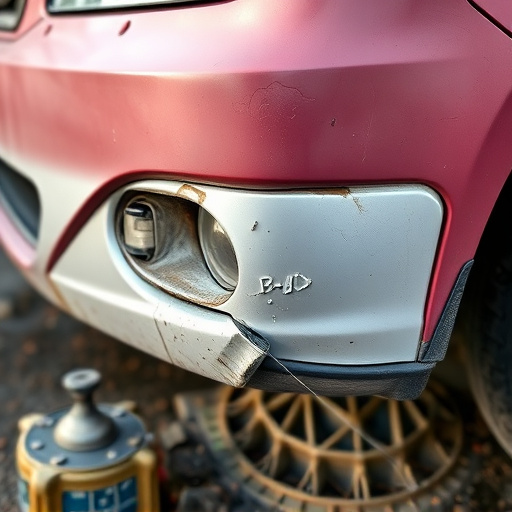Customer Safety Assurance (CSA) is a strategic approach for businesses to prioritize customer well-being and service quality by minimizing risks through rigorous testing, quality control, and continuous improvement in product design and delivery. Neglecting CSA can lead to legal repercussions, financial losses, and damaged reputations. Implementation across sectors like automotive repair reduces risk of lawsuits and recalls, with strategies including accident prevention protocols, staff training, and advanced safety equipment. Regular reviews and adherence to best practices ensure compliance and foster trust.
Customer Safety Assurance (CSA) is a cornerstone in mitigating legal and liability risks for businesses. By prioritizing consumer well-being, companies fortify their defenses against potential lawsuits and regulatory penalties. This article delves into the essential elements of CSA, exploring its legal implications and providing practical strategies to ensure compliance and minimize exposure. Understanding and implementing robust safety measures are key to navigating business operations seamlessly and protecting your organization from costly legal repercussions.
- Understanding Customer Safety Assurance: The Foundation
- Legal Implications of Neglecting Customer Safety Measures
- Implementing Strategies for Risk Mitigation and Compliance
Understanding Customer Safety Assurance: The Foundation

Customer Safety Assurance (CSA) is a cornerstone in any business focused on customer well-being and service quality. It involves a comprehensive set of processes aimed at minimizing risks associated with product or service delivery, ensuring that customers are protected from potential harm. CSA isn’t just about adherence to legal standards; it’s a proactive approach that fosters trust and loyalty among clients. By prioritizing safety, businesses can significantly reduce the likelihood of lawsuits, recalls, and other costly liabilities.
At its core, CSA involves rigorous testing, quality control measures, and continuous improvement in product design and service delivery. In industries like automotive repair, for example, this translates to meticulous frame straightening and dent removal techniques. These procedures not only enhance vehicle aesthetics but also contribute to safety by ensuring structural integrity. When implemented across all aspects of a business, CSA becomes a powerful tool for risk management, allowing companies to operate with confidence, knowing they’ve taken every reasonable step to safeguard their customers.
Legal Implications of Neglecting Customer Safety Measures

Neglecting customer safety measures can have severe legal implications for businesses, potentially leading to significant financial and reputational damage. In many jurisdictions, companies are held to a standard of care when interacting with consumers, which includes ensuring their well-being during various transactions or services provided. If found negligent, businesses may face substantial lawsuits from affected customers. For instance, if a company fails to implement proper safety protocols during an automotive service and causes accidental damage to a customer’s vehicle, such as a dent removal or car paint repair mishap, the victim could pursue legal action for compensation.
Moreover, inadequate customer safety assurance can result in regulatory bodies imposing fines and penalties. These bodies are tasked with enforcing consumer protection laws, and they take seriously any instances of negligence that lead to harm or loss. For businesses dealing with services like scratch repair, neglecting safety standards could invite scrutiny from these regulators, who may demand changes to operational procedures and potential financial reimbursements to affected clients.
Implementing Strategies for Risk Mitigation and Compliance

Implementing effective customer safety assurance strategies is a proactive approach to risk mitigation and compliance. By prioritizing the well-being of customers, businesses can significantly reduce potential legal liabilities. This involves creating robust protocols for accident prevention, ensuring proper training for staff, and implementing state-of-the-art safety equipment. For instance, in the automotive industry, focusing on car dent removal or paintless dent repair using advanced techniques not only enhances customer satisfaction but also safeguards against accidents during vehicle repair services.
Regular reviews of existing procedures are crucial to staying ahead of evolving regulations. Staying updated with industry best practices ensures that every aspect of the customer experience aligns with safety standards. This commitment to compliance is a powerful risk management tool, demonstrating a business’s dedication to maintaining the highest levels of integrity and quality in their car dent removal or paintless dent repair services, thereby fostering trust among customers.
Customer safety assurance is not just a best practice; it’s an indispensable strategy for businesses aiming to minimize legal and liability risks. By understanding the foundational principles, addressing potential pitfalls through robust safety measures, and implementing compliant strategies, companies can foster a culture of customer well-being and protect themselves from costly consequences. This holistic approach to customer safety assurance is key to navigating a competitive market while safeguarding against legal challenges.














